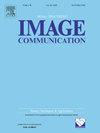CNN-augmented SAR image despeckling using modified speckle reducing anisotropic diffusion and discrete wavelet transform
IF 2.7
3区 工程技术
Q2 ENGINEERING, ELECTRICAL & ELECTRONIC
引用次数: 0
Abstract
Speckle, a multiplicative granular noise, inherently appears in coherent imaging techniques such as synthetic aperture radar (SAR). It deteriorates the visual quality of images, which leads to difficulty in image interpretation for further analysis. Hence, speckle filtering is essential to recover the image details for applications like segmentation and classification. Several despeckling techniques have been developed in the literature, among which anisotropic diffusion (AD) and discrete wavelet transform (DWT) based methods have achieved state-of-the-art despeckling performance. However, AD cannot be employed indefinitely owing to blurring and detail loss. Similarly, DWT produces spurious noise around edges. This paper proposes a high-performance despeckling technique that uses modified speckle reducing anisotropic diffusion as the preprocessing step in a homomorphic architecture. The architecture uses discrete wavelet transform, dynamic weighted adaptive thresholding (DWAT), weighted least squares, and guided filtering to recover the clean image. In addition, to enhance the performance of the despeckling process, a convolutional neural network (CNN) is used as a subsequent processing module to remove residual speckle while preserving the edges. The CNN uses a supervised learning paradigm trained on simulated speckled and clean image pairs to fine-tune the despeckled output. Subjective (visual) and objective evaluations on both simulated and real SAR datasets demonstrate that the proposed hybrid approach achieves robust despeckling performance, particularly excelling in edge preservation, radiometric consistency, and detail reconstruction across varied scene types as compared to the existing methods.
基于改进散斑减少各向异性扩散和离散小波变换的cnn增强SAR图像去斑
散斑是合成孔径雷达(SAR)等相干成像技术中固有的一种乘性颗粒噪声。它降低了图像的视觉质量,给进一步分析图像的判读带来了困难。因此,在分割和分类等应用中,散斑滤波对于恢复图像细节是必不可少的。文献中已经发展了几种去噪技术,其中基于各向异性扩散(AD)和离散小波变换(DWT)的方法实现了最先进的去噪性能。然而,由于模糊和细节损失,AD不能无限期地使用。类似地,DWT在边缘周围产生伪噪声。本文提出了一种高性能的去斑技术,该技术在同态结构中使用改进的散斑减少各向异性扩散作为预处理步骤。该结构采用离散小波变换、动态加权自适应阈值分割、加权最小二乘和引导滤波等方法恢复干净图像。此外,为了提高去斑过程的性能,使用卷积神经网络(CNN)作为后续处理模块,在保留边缘的同时去除残留的散斑。CNN使用在模拟斑点和干净图像对上训练的监督学习范式来微调斑点输出。对模拟和真实SAR数据集的主观(视觉)和客观评估表明,与现有方法相比,所提出的混合方法具有鲁棒的去斑性能,特别是在边缘保存、辐射一致性和不同场景类型的细节重建方面表现出色。
本文章由计算机程序翻译,如有差异,请以英文原文为准。
求助全文
约1分钟内获得全文
求助全文
来源期刊

Signal Processing-Image Communication
工程技术-工程:电子与电气
CiteScore
8.40
自引率
2.90%
发文量
138
审稿时长
5.2 months
期刊介绍:
Signal Processing: Image Communication is an international journal for the development of the theory and practice of image communication. Its primary objectives are the following:
To present a forum for the advancement of theory and practice of image communication.
To stimulate cross-fertilization between areas similar in nature which have traditionally been separated, for example, various aspects of visual communications and information systems.
To contribute to a rapid information exchange between the industrial and academic environments.
The editorial policy and the technical content of the journal are the responsibility of the Editor-in-Chief, the Area Editors and the Advisory Editors. The Journal is self-supporting from subscription income and contains a minimum amount of advertisements. Advertisements are subject to the prior approval of the Editor-in-Chief. The journal welcomes contributions from every country in the world.
Signal Processing: Image Communication publishes articles relating to aspects of the design, implementation and use of image communication systems. The journal features original research work, tutorial and review articles, and accounts of practical developments.
Subjects of interest include image/video coding, 3D video representations and compression, 3D graphics and animation compression, HDTV and 3DTV systems, video adaptation, video over IP, peer-to-peer video networking, interactive visual communication, multi-user video conferencing, wireless video broadcasting and communication, visual surveillance, 2D and 3D image/video quality measures, pre/post processing, video restoration and super-resolution, multi-camera video analysis, motion analysis, content-based image/video indexing and retrieval, face and gesture processing, video synthesis, 2D and 3D image/video acquisition and display technologies, architectures for image/video processing and communication.
 求助内容:
求助内容: 应助结果提醒方式:
应助结果提醒方式:


